A new set and the prospect of new formats can be a daunting prospect in TCGs, and Flesh and Blood is no different in that regard. Hundreds of new cards to learn and understand, interactions to get your head around, and of course these all need to be adjusted for limited and constructed formats. While there will always be an aspect of the unknown and the need to start by just reading cards and playing games, there are things you can do to give yourself an edge. By sticking to a few important principles, you can ensure you set yourself up for success when a new set drops.
Today I go over some core fundamentals you can utilize whenever a new set arrives. My focus is on broader concepts, but I'll also dive into some format-specific principles and approaches.
General Principles
From a macro perspective, there are a few principles I believe you can learn, master, and rely on to put yourself in a strong position in a new meta.
Learn to Evaluate Cards
One of the most important things you can learn to stay agile in a changing card pool is card evaluation. The better you get at card evaluation techniques, the more time you are going to save throwing piles of cards together and seeing what works. Don’t get me wrong, exploring cards and their interactions is super important; cards often exceed or fall short of expectations, in part because it is impossible to learn every interaction just by studying cards, and in part because games will often play out differently than how you theorize them to.
That's the key word here: theory. If you are able to construct solid theories about cards before you even play with them, then you will be able to assess their overall strengths and weaknesses, both in isolation (as a single card in any given game) and in their strategic synergies. This has an overall effect of strengthening your deckbuilding (constructed and sealed) and ability to spot vulnerabilities in decks or metagames.
The better you get at card evaluation techniques, the more time you are going to save throwing piles of cards together and seeing what works.
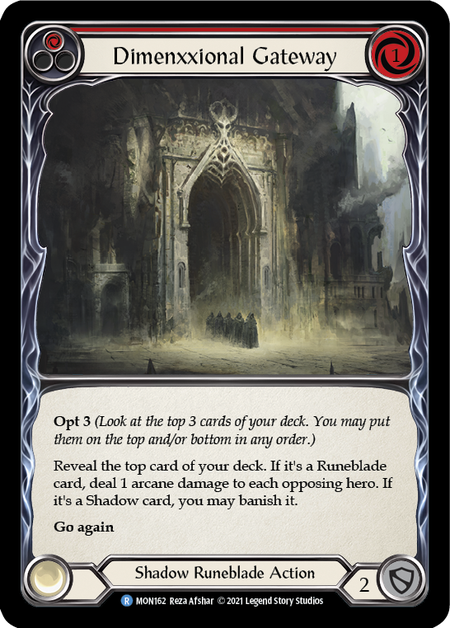
Let’s take Dimenxxional Gateway (red) as an example. If we use basic card evaluation techniques, we can learn a lot about how this card might perform and in what strategies/decks it is likely going to realise its potential, thereby gleaning valuable information on where this card might significantly underperform.
When breaking down a card for evaluation, ask two key questions:
- What is the expected value return of this card in an ideal situation for the card to be played? – This should always be your starting point, “the ceiling”. With Dimenxxional Gateway, that would be 1 resource in return for Opting 3 cards to setup both the card’s primary effect and our next draw; from there, dealing 1 Arcane Damage and putting a relevant Shadow attack into the Banished Zone that we can play out as soon as desired.
1 resource, set up the top of deck, 1 Arcane damage (which can enable other cards) and (effectively) draw a card (the banished card).
- What is the value of the card in a “worst-case scenario”? – 1 Resource for Opt 3 to put all cards to the bottom, no Arcane damage and no banish.
1 resource to Opt 3.
The more cards you assess in this way, the quicker you'll be able to build great synergies and formulate optimal strategies.
Now we have two scenarios. The ceiling of this card is very high and provides significant value for Chane decks in general. However, the floor is almost unplayable, particularly in constructed. So now we have two clear scenarios in our card evaluation. What does that mean?
You can next move to assess this card with parameters- i.e. "in the right shell this card is likely very good". How likely is it that you will fall close to or realize the card's ceiling? You have an approximate power level and aptitude of the card just from doing this.
The more you can do this with every card you see, the more you will find and be able to build great synergies and formulate optimal strategies early with the right cards in a deck. This is extremely useful in both drafting and deckbuilding in a young environment. Some cards will be more difficult to assess, others will be fairly straightforward.
Identify and Understand Card Interactions and Overall Strategies
In many ways, this is an extension of the first principle. The goal here is to look at cards and find ways to use the card in a broader strategy to get the most out of it. If you can evaluate cards well, you are probably most of the way to practicing this second principle. However, we can take it one step further and use our knowledge of a card post-evaluation to extrapolate what other cards would work in conjunction with, are enabled by, or support the card at hand- or which cards actively make it less functional!
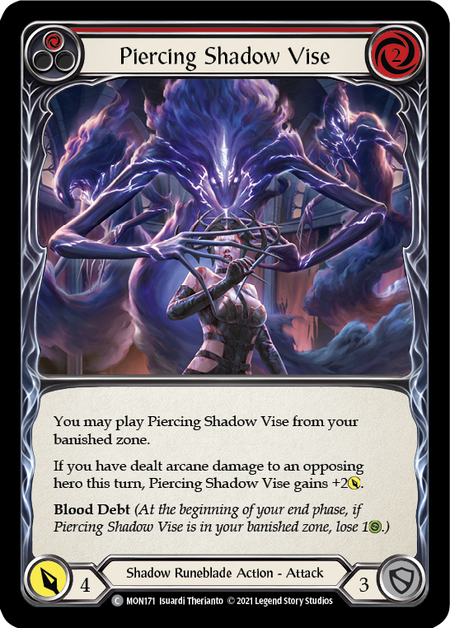
To illustrate this next step, here are some examples for each of these above classifications and what we can learn from a card in relation to other cards and broader strategies. Let’s take Dimenxxional Gateway again. From our baseline card evaluation, we know we have a powerful effect when we can ensure we have a high likelihood of Opting into a strong Shadow card to play from banish. Gateway makes each card that can be played from banished a little bit better, as any card we get directly into the Banished Zone and play from there is a card we don't have to draw.
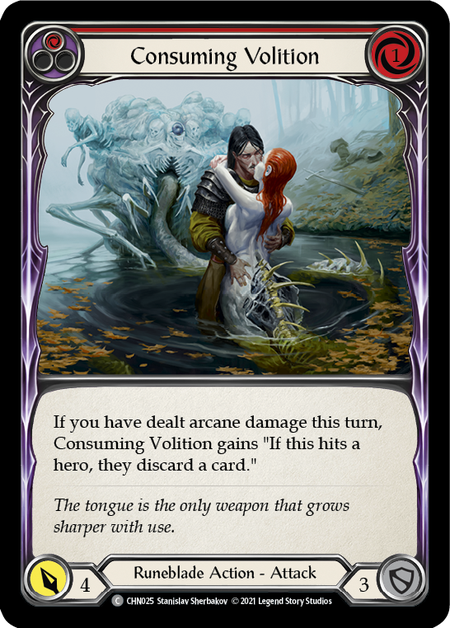
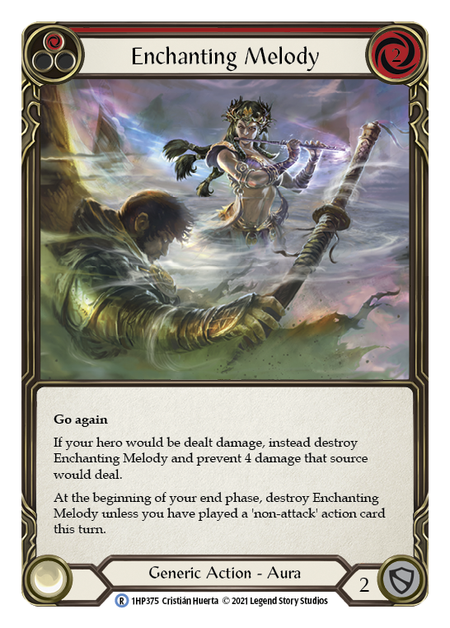
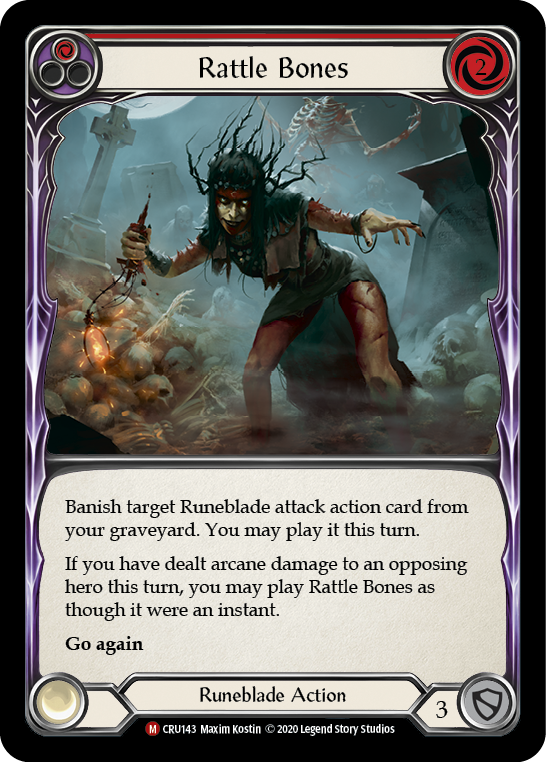
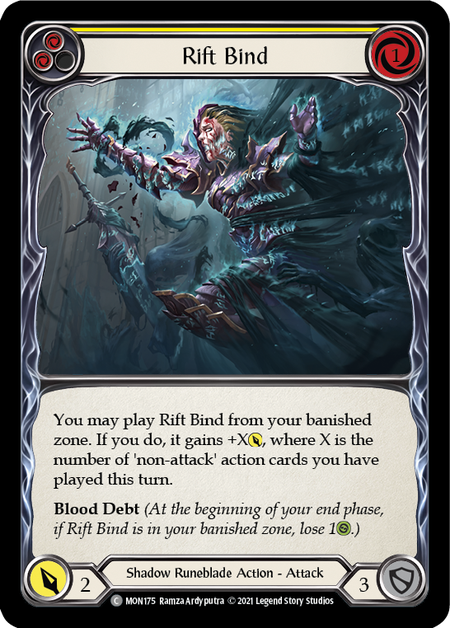
Gateway can support cards such as Rattle Bones, Piercing Shadow Vise, or even Consuming Volition as a pure enabler due to the arcane damage it deals. We can assess that Gateway can even help enable big turn strategies involving Blood Debt actions from banish, simply by counting as a non-attack action for a card like Rift Bind. Lastly, Gateway makes an opponent's defensive card like Enchanting Melody a lot less valuable because of the single source of 1 damage.
This is just one card and a single example of a simple, broader spectrum evaluation process of card interactions and strategic evaluation. You can certainly go much deeper than this when you get really into a set. However, just from taking a few minutes to go through a short list of repeatable questions, you gain a lot of knowledge about the aptitude of any given card. It won’t be perfect or all-encompassing, but it will give you a good base of knowledge to work from early in a format.
Just taking a few minutes to go through a short list of repeatable questions, you gain a lot of knowledge about the aptitude of any given card.
Core Deck-Building Principles
This one is absolutely essential for Constructed, but you'll still find it valuable in limited formats, particularly Sealed. Start by having a set of guiding principles that you use when building any deck from scratch. Guiding principles for deck construction can get very in depth; you can spend significant time going through a lot of questions/checks before even shuffling up for a game. I would suggest start fairly top-level, but use your deckbuilding principles to ensure your deck is focused and its strategy is tight. Below are some basic deckbuilding principles I think everyone should be using when deckbuilding:
Have At Least 1 Clear Plan to Win the Game
This might sound very simple, but don’t confuse a way to deal damage with a way to win the game. For example, a weapon like Romping Club is a way to deal damage, but not necessarily a way to win the game. You need to ask, "How do I plan to use the Club?" "How can it help me to win the game when the opponent is enacting their own plan?”
Don’t confuse a way to deal damage with a way to win the game.
Using Romping Club as a way to win the game via fatiguing the opponent would be an example of a core game plan. This could look something like a deck with a high number of blue and yellow resource cards to pay for the Club and a suite of defensive cards that allow you to rebuff an opponent’s plan while utilizing the Club to present damage without costing a card each turn, eventually outlasting the opponent on cards.
Taking Chane as an example, perhaps the game plan or “win condition” is to setup and execute a few key turns to overrun the opponent with a huge number of attacks, leveraging the power of playing from the Banished Zone. Just as important as having the plan though is knowing how to build for it.
Build a Core Deck that has the Sole Purpose of Enacting Your Gameplan
Having a deck “core”, or main deck, with the sole purpose of enacting a game plan might be a bit extreme, but it is a good starting point and you can flex this a little bit after the initial build. In essence, build out a core deck of cards that supports your core plan. This can be in the form of cards that directly enact the plan (eg. defense reactions in a fatigue deck, or Blood Debt cards that help set up Chane's big turns). Reduce the noise and avoid the temptation to put in your favorite pet card if it doesn’t directly enable and/or support your game plan.
In Blitz, this is straightforward: 40 cards for every game. But for Classic Constructed, I see the core as usually around 45-55 cards, leaving your remaining spots for cards that act as a pre-board to either augment the plan in certain matchups, provide different defensive or offensive options, or even allow you to completely change the plan up.
Reduce the noise, and avoid the temptation to put in a card if it doesn’t directly support your game plan.

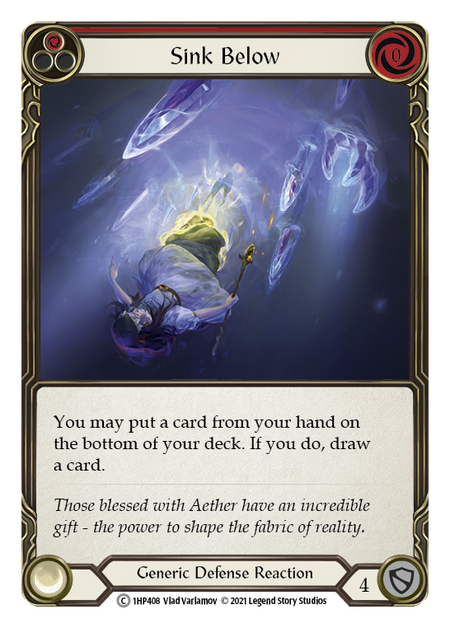
One of the biggest mistakes I see players make when building a deck is starting with a core of “auto include cards” or "staples"- cards they feel are always necessary in a deck. A few prominent examples include Enlightened Strike and Sink Below (red). In reality, there just aren't any auto include cards in FaB yet, and "good stuff" cards that don't have ties to your core strategy will actively hurt it, making your deck worse. A defense reaction, for example, is going to be of no use to you if you are trying to present consistent 5 card hands of pressure to the opponent.
Note: You will have some decks where a core is just the majority or whole of the deck – i.e., full Boost Mech could easily be 70 core cards, a small handful of Items in the sideboard, Equipment and a Weapon.
Know Your Role
When deciding how you want to build and play a deck, it is important to know what role your deck will take in any given matchup. If you are likely going to need to defend in the majority of matches, ensure your deck can do it efficiently. Cards that don’t defend, or defend for 2, come at an even higher cost for these decks than, say, a deck that wants to always be aggressive and play out hands.
On the flip side of that, if you are going to be the aggressor in the majority of matchups and actively look to play 4 or 5 card hands as much as possible, defense reactions and similar narrow-use cards are a liability that can hamper your plan.
Focus on the Fundamentals
I’ve left the most important tip for last. Flesh and Blood clearly continues to evolve set by set, with more mechanics and new ways to battle the opponent. What hasn’t changed, however, is the basic fundamentals of the game: defending efficiently, pitching with the mid- and late-game in mind, and maximizing damage, all in an effort to win turn cycles. These facets are still the core of Flesh and Blood gameplay. If you can master these and not forget them while you get your juicy 5 card hands set up, align late-game combos, amass your Soul and leverage the Banish Zone, then you will find yourself winning games purely on the back of one or two tight plays that got you an edge over the opponent. Fundamentals, fundamentals, fundamentals!
Advanced Approaches for Gaining the Edge
In addition to the macro core principles, here are some format-specific strategies that can really push you ahead of the competition from week one.
Limited - Draft & Sealed
- Form a set of baselines for expected power and return on your cards. This allows you to save time on cards that don’t belong in the deck. This will also help you to quickly identify cards that will be strategic focal points for your path to victory. Think of these like rules of thumb. They will often be different for each class, as each hero will be able to utilize cards differently. You want to be able to say that any given card is above or below the rate you expect for the class. An example of a baseline for Brute might be "a 6 attack card for 3 cost that defends for 3", while for Ninja the baseline might be "zero cost attack for 4". Use caution with this, as your initial benchmarks could simply be incorrect and need reassessing as you go. You will also find a lot of cards will work in harmony to be greater than the sum of their parts.
- Identify and build strategies for a cohesive deck. Essentially, have a focus and not just a pile of “good” cards. Limited is about utilizing synergies to improve your outcomes and assessing card strength on the fly. You want to craft your deck in a way that the average hand can accomplish either a significant damage threat, or a mix of attack plus defense. Again, this is best accomplished with a clear game plan. You also want to ensure you have an endgame, and that cards you will pitch in a game serve a purpose when you draw them again. You can even practice the process of identifying strategies and synergies for a cohesive deck. Look over the spoilers for any new set and start finding interactions and sets of cards that you can pair together.
Constructed
- Practice metagame evaluation. When considering new deck builds, try to identify a likely meta and establish which decks should be your benchmark to beat. This can be a great way to guide the kind of deck you build, and help you immediately rule out some approaches that just won’t cut it against strategies you know you will need to beat. To help, you should try to learn, at least roughly, how the anticipated meta decks want to play the early, mid, and endgame.
- Focus on the strategies you need to employ to win in these identified metagames. You know the decks to beat; now develop a holistic approach to go after your targets. It isn’t enough to simply say, “I want to beat X so I’ll play a few of these cards in my deck”. It is most likely not going to work! You might have a few good turn cycles with your handful of targeted cards, but if your gameplan is fundamentally weak to the opposition then they will just amass the advantage over the game. This is especially true in Classic Constructed, where the game lasts across a larger number of turns on average. Instead, consider where your matchup strength lies in the early/mid/late game, and how you can focus your strategy there in the targeted matchups to push for victory. Do you have a favorable early game against one of the key meta decks? How can you focus your deck and strategy to take full advantage of that?
It isn’t enough to simply say, “I want to beat X so I’ll play a few of these cards in my deck.”
Entering the fray of a new format is never easy. No one has a finely tuned Constructed deck ready to take to battle in week one. Likewise, the Limited format takes time to master, using trial and error to find the range of strategies and the favorable interactions for each Hero. The principles shared above are broad guidelines to follow. I like to treat them as a process to refer back to beginning with previews, moving through pre-release weekend and full set release, and continuing until a month or two post-release, when the meta settles down a bit.
- Repetition of card evaluation
- Focusing on card interactions and strategies
- Utilizing core deckbuilding principles,
- Mastering the fundamentals.
Do all of this and you have already set yourself a mile ahead of the competition. Get familiar with and work on the principles for new set success, and you are on track to be taking out events regularly through the early portion of a set release. Stick to these principles- refine them, expand them, perfect them- and you'll find that early lead developing into consistent advantage.




